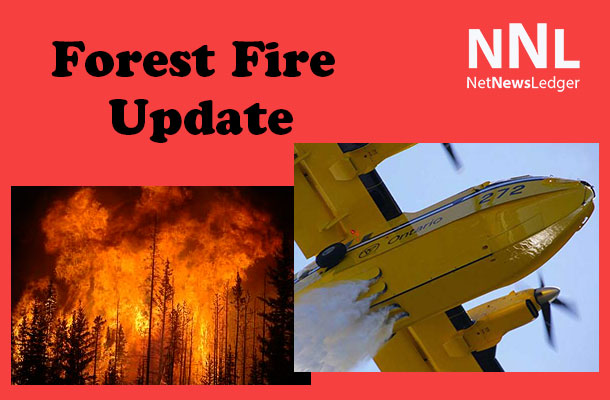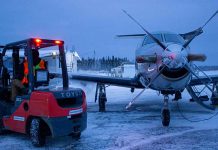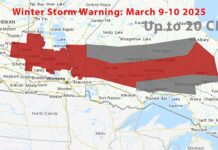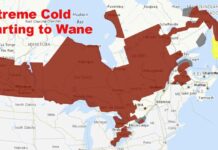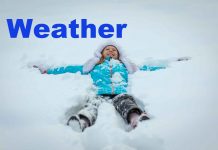THUNDER BAY – A wildfire near Pickle Lake – Sioux Lookout #8 – has resulted in a significant effort to fight the fire.
Here is the fire in Pickle Lake. I hope everyone is safe. I’m also hoping the Internet fibre does not burn. We need to prepare for the forest fires in northern Ontario. #kiiwetinoong pic.twitter.com/oM5osrfMZE
— Sol Mamakwa MPP (@solmamakwa) June 6, 2019
Forest Fire Situation Update – Northwest Region June 6, 2019
There were three new fires in the Northwest Region by the late-afternoon of June 6. There are currently four active fires in the Northwest Region, all of which are not under control
- Red Lake 17 is located 55 kilometres northeast of the town of Red Lake, north of Tackaberry Lake. The fire is not under control at 30 hectares. FireRangers and aerial suppression responded.
- Sioux Lookout 8 originated near the community of Pickle Lake between the town site and the neighbouring area of Central Patricia. At 200 hectares in size the fire is not under control. The AFFES responded by dispatching aerial suppression (waterbombers) and Initial Attack FireRanger crews.
- Thunder Bay 7 is located approximately 45 kilometres northeast of Armstrong near Lee Creek. The 0.5 hectare fire is not under control.
- Red Lake 14 near Pikangikum Red Lake 14 near Pikangikum anticipated higher fire behaviour today following a few days of lower intensity burning which has helped crews consolidate hose lines on the fire’s perimeter. Helicopters assisted firefighting crews today with an infra-red scan of the fire area and by bucketing water onto hot spots. A total of 25 crews are now assigned to the fire, which remains at 3,835 hectares. The fire is not yet under control.
Fire hazard extreme in parts of region
The forest fire hazard in the Northwest Region varies from high to extreme in the Red Lake, Sioux Lookout, Nipigon and northern portion of the Thunder Bay sector. Kenora sector ranges from a high to moderate hazard while Dryden, Fort Frances and the southern portion of Thunder Bay sector range from a low to moderate fire hazard.
AFFES staff deployed out of province
Approximately 230 staff members from Aviation, Forest Fire and Emergency Services are assisting the province of Alberta with its escalated fire situation. This includes FireRangers, support staff and one incident management team. In addition, the Ministry of Natural Resources and Forestry is providing equipment such as pumps, hose and hand tools to support Alberta.
More than 50 staff members from Aviation, Forest Fire and Emergency Services have been deployed to assist the Yukon with current active forest fires. This includes FireRangers and support staff.
There are also an additional 2 support staff members from Ontario who have been deployed out of province, one to assist the Canadian Interagency Forest Fire Centre in Winnipeg, and one to the Northwest Territories.
The sharing of resources across Canada is facilitated by the Canadian Interagency Forest Fire Centre in Winnipeg under the Mutual Aid Resource Sharing agreement.
The fire situation in Ontario has been relatively quiet since the beginning of the 2019 fire season, and we remain fully prepared to respond to any forest fires that may arise here at home.
Help prevent forest fires
Adopt safe campfire practices! Choose the site of your campfire carefully and keep your fire small. Stay nearby: never leave it unattended. Put your fire out by drowning it with water. Be sure that it is extinguished prior to leaving the site. Stir the ashes with a stick to uncover hot coals and then drown it again. You can never be too safe.
Consider alternatives to burning brush or yard waste, such as chipping or composting when possible, or saving burn piles for the fall or after the fire season. Use of outdoor fires must follow the outdoor burning rules set out in the Forest Fire Prevention Act of Ontario. Fires are to be started no sooner than two hours before sunset and extinguished no later than two hours after sunrise. Fires should never be left unattended and tools and water should be close at hand to put the fire out. More details on outdoor burning regulations can be found online at Ontario.ca/forestfire
To see a complete list of fires across the province click on our interactive map. You can also get the latest update on the condition of any fire by clicking the fire icon.
Fire numbers and online information:
- Forest Fire Reporting Number – 310-FIRE (3473)
- Twitter account


